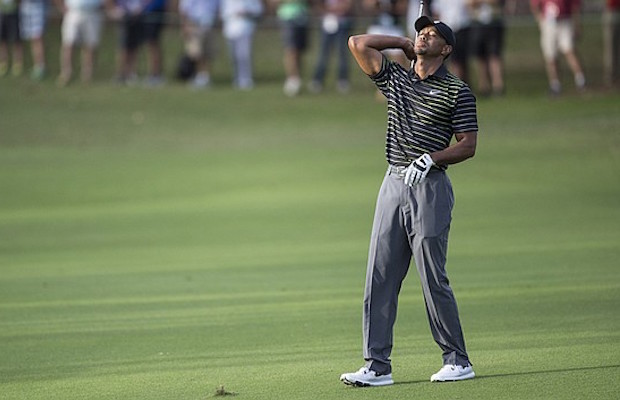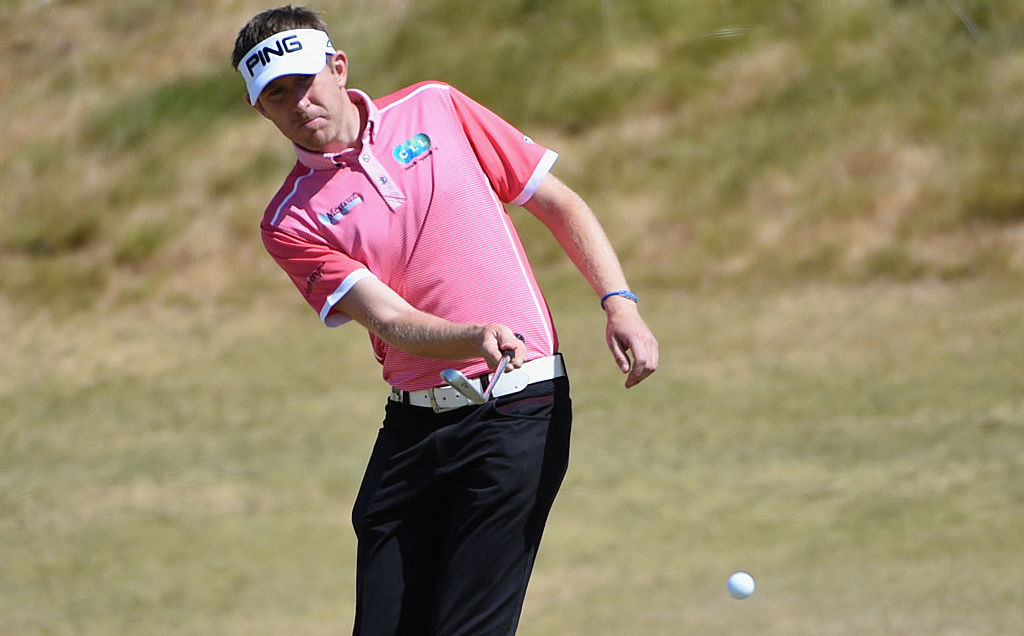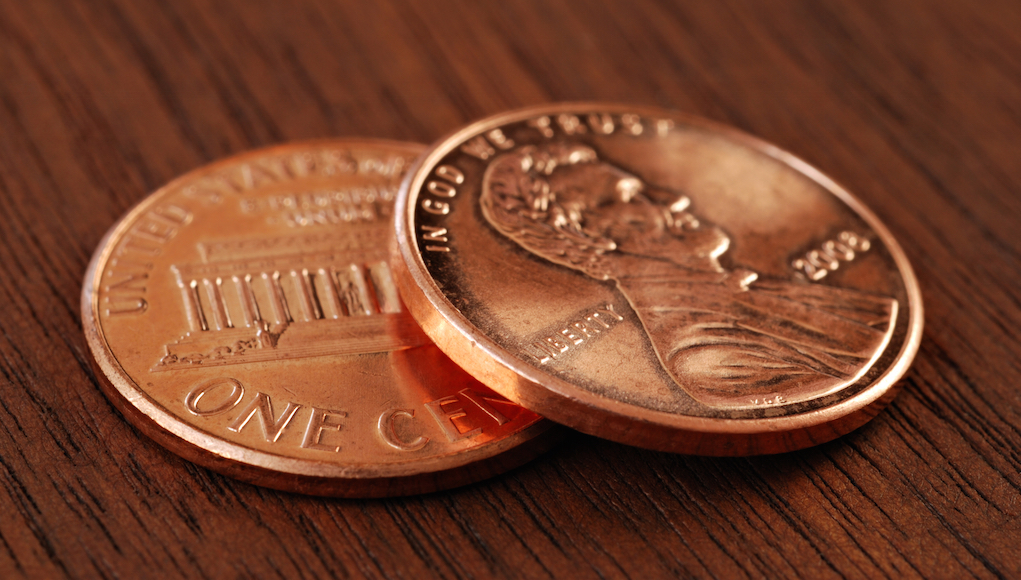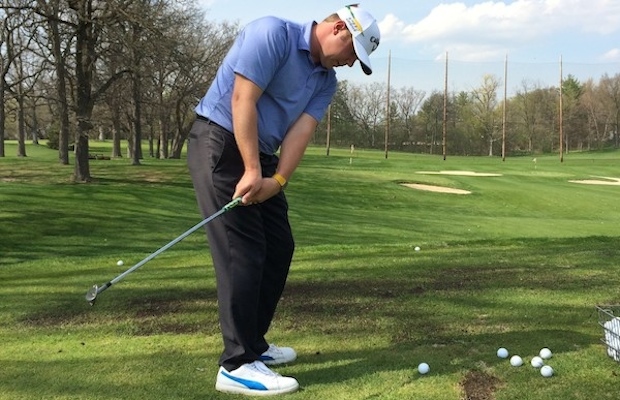Instruction
What Tiger taught us about hitting pitch shots

Watching Tiger struggle around the greens at the Hero World Challenge was both astonishing and enlightening. It was astonishing because it was Tiger Woods, and enlightening because it was more proof that feel and technique are equally important in golf.
Touring professionals make the game look ridiculously simple at times. They make it look so easy that we often take their technique for granted. We assume that their form is so grooved that all they concern themselves with is feel. But when we see a player of Tiger’s caliber completely flub no less than seven greenside pitches in four rounds — a few of them flying 5 feet or less — it reminds us that technique is a big part of short shots, and that even the world’s best struggle when they lose form. Granted, Tiger was not the only player to struggle with the grainy lies on the greenside slopes around Isleworth Country Club during the event, but he did seem to have a serious case of the chipping yips, a rare occurrence for a player of his caliber.
Greenside pitches and chips are played from a variety of lies and slopes from a wide assortment of different grasses. That’s why the very first thing a player needs to do before they hit a pitch or chip is assess the lie of the golf ball. Golf club selection, setup and stroke are all based on the lie. My students often ask “what shot should I play from 35 yards,” or some other distance. The answer is based completely on what the course will allow — the lie, needed carry, room for the ball to roll out, etc.
Pitching over a hazard or to an elevated green from a tight lie is a completely different shot than one from deep grass. To complicate matters, a shot from the rough into the grain is a drastically different than a shot that is downgrain.
Let’s take a look at some things that might help make us more comfortable around the greens in sticky situations.
A pitch, which is a short, lofted shot played near the green, is all about attack angle and loft. When you’re in the rough and the golf ball is sitting DOWN, the attack angle needs to be sufficiently steep. To play the shot, you want to flex at the knees a bit more than usual, play the ball slightly forward-of-center in your stance and emphasize the weight on the lead foot with a slightly open face. I would be careful of placing the hands too much in front of the ball from deep rough, as it tends to take too much loft off the shot. Hands in front is a steepening technique, but in the rough the ball may not pop out sufficiently, so be careful.
The swing for a pitch should be wristy, elevating the club abruptly and being fairly aggressive through the hitting area. Deceleration is a killer on this shot, because it is played very similar to the blast shot from a greenside bunker. Once you’ve decided to go with this shot, HIT IT! Expect the ball to roll out a bit when it lands.
Conversely, if the ball is sitting UP in the rough consider not grounding the club at address. This will help guard from going under the ball and hitting it high on the face — it will also help avoid incurring a penalty stroke for moving the ball. Depending upon how high the ball is sitting and how far you have to carry the shot, a firm-wristed chipping motion is not a bad method here, but the ball needs to be hit with a very LEVEL attack angle for a clean, center-struck shot. Shots off the top of the face have reverse vertical gear effect, which makes them fly shorter. You can generate a little spin on this shot if it’s hit perfectly.
Pitching from tight lies is a bit different than shots from the rough, but again, attack angle is critical. Depending on the bounce of your wedge, which is the angle of the sole from the leading edge to the trail edge, you might need to employ a different entry into impact. If you have a wedge with a good amount of bounce, say 12 degrees or more, you will need a steep attack angle. A shallow, wide-bottom swing can cause the leading edge of the club to hit the belly of the ball instead of the bottom and the dreaded skull shot is predictable.
To ensure a steep angle of attack, narrow the stance, keep your weight on your lead leg with the ball slightly back in the stance and set your hands ahead of the ball. The setup here is similar to chipping, but you’re using a club with a lot of loft. Where the shot differs from a standard chip is the swing — it’s more UP, so set the wrists a little in the backswing. I also recommend a little turn though the ball with the body into impact. I see too many pitch shots hit fat from tight lies because players try to remain stationary with the body.
With a low-bounce wedge, say 10 degrees or less, it’s best to keep the attack angle more shallow. The leading edge can dig into the turf behind the ball if the attack angle gets too steep. I’d recommend a little wider stance (never too wide with a pitch), your weight fairly evenly distributed and the hands above, not in front, of the golf ball. The swing secret with a low bounce wedge is to use little-to-NO wrists. Push the arms away on the backswing to ensure a wider swing bottom and a more shallow attack angle. Use little-to-no wrists on your takeaway to avoid having the leading edge stubbing the ground behind the golf ball.
This may sound overwhelming, but all I’m really suggesting here is a setup and swing technique to complement the shot at hand. Avoiding skulls or chili-dips can be simply a matter mental preparation. And remember to never fight the slope! The same spine angle you’d set for uphill and downhill shots from the fairway apply around the greens (shoulders parallel to slope, spine perpendicular).
Finally, if you play in Bermuda grass, be careful of the grain. An into-the-grain pitch is a really tough shot. Any slight miscue is magnified greatly. Again, do NOT set the hands too far ahead for fear that the leading edge will dig into the grain, which will cause you to hit the shot fat. The ball can be back, but leaning too forward or de-lofting too much also runs the risk of hitting it fat. Set up over the ball with the hands above it, not in front, and weight fairly evenly distributed. I’d recommend more of an arm swing than a wristy one.
Remember my tips the next time you set up to a pitch shot that makes you uncomfortable, and remember to always read the slope and lie before you choose on your shot.
If you’d like me to analyze your swing, go to my Facebook page and send me a message, or contact me (dennisclarkgolf@gmail.com) about my online swing analysis program.
Instruction
The Wedge Guy: Beating the yips into submission

There may be no more painful affliction in golf than the “yips” – those uncontrollable and maddening little nervous twitches that prevent you from making a decent stroke on short putts. If you’ve never had them, consider yourself very fortunate (or possibly just very young). But I can assure you that when your most treacherous and feared golf shot is not the 195 yard approach over water with a quartering headwind…not the extra tight fairway with water left and sand right…not the soft bunker shot to a downhill pin with water on the other side…No, when your most feared shot is the remaining 2- 4-foot putt after hitting a great approach, recovery or lag putt, it makes the game almost painful.
And I’ve been fighting the yips (again) for a while now. It’s a recurring nightmare that has haunted me most of my adult life. I even had the yips when I was in my 20s, but I’ve beat them into submission off and on most of my adult life. But just recently, that nasty virus came to life once again. My lag putting has been very good, but when I get over one of those “you should make this” length putts, the entire nervous system seems to go haywire. I make great practice strokes, and then the most pitiful short-stroke or jab at the ball you can imagine. Sheesh.
But I’m a traditionalist, and do not look toward the long putter, belly putter, cross-hand, claw or other variation as the solution. My approach is to beat those damn yips into submission some other way. Here’s what I’m doing that is working pretty well, and I offer it to all of you who might have a similar affliction on the greens.
When you are over a short putt, forget the practice strokes…you want your natural eye-hand coordination to be unhindered by mechanics. Address your putt and take a good look at the hole, and back to the putter to ensure good alignment. Lighten your right hand grip on the putter and make sure that only the fingertips are in contact with the grip, to prevent you from getting to tight.
Then, take a long, long look at the hole to fill your entire mind and senses with the target. When you bring your head/eyes back to the ball, try to make a smooth, immediate move right into your backstroke — not even a second pause — and then let your hands and putter track right back together right back to where you were looking — the HOLE! Seeing the putter make contact with the ball, preferably even the forward edge of the ball – the side near the hole.
For me, this is working, but I am asking all of you to chime in with your own “home remedies” for the most aggravating and senseless of all golf maladies. It never hurts to have more to fall back on!
Instruction
Looking for a good golf instructor? Use this checklist

Over the last couple of decades, golf has become much more science-based. We measure swing speed, smash factor, angle of attack, strokes gained, and many other metrics that can really help golfers improve. But I often wonder if the advancement of golf’s “hard” sciences comes at the expense of the “soft” sciences.
Take, for example, golf instruction. Good golf instruction requires understanding swing mechanics and ball flight. But let’s take that as a given for PGA instructors. The other factors that make an instructor effective can be evaluated by social science, rather than launch monitors.
If you are a recreational golfer looking for a golf instructor, here are my top three points to consider.
1. Cultural mindset
What is “cultural mindset? To social scientists, it means whether a culture of genius or a culture of learning exists. In a golf instruction context, that may mean whether the teacher communicates a message that golf ability is something innate (you either have it or you don’t), or whether golf ability is something that can be learned. You want the latter!
It may sound obvious to suggest that you find a golf instructor who thinks you can improve, but my research suggests that it isn’t a given. In a large sample study of golf instructors, I found that when it came to recreational golfers, there was a wide range of belief systems. Some instructors strongly believed recreational golfers could improve through lessons. while others strongly believed they could not. And those beliefs manifested in the instructor’s feedback given to a student and the culture created for players.
2. Coping and self-modeling can beat role-modeling
Swing analysis technology is often preloaded with swings of PGA and LPGA Tour players. The swings of elite players are intended to be used for comparative purposes with golfers taking lessons. What social science tells us is that for novice and non-expert golfers, comparing swings to tour professionals can have the opposite effect of that intended. If you fit into the novice or non-expert category of golfer, you will learn more and be more motivated to change if you see yourself making a ‘better’ swing (self-modeling) or seeing your swing compared to a similar other (a coping model). Stay away from instructors who want to compare your swing with that of a tour player.
3. Learning theory basics
It is not a sexy selling point, but learning is a process, and that process is incremental – particularly for recreational adult players. Social science helps us understand this element of golf instruction. A good instructor will take learning slowly. He or she will give you just about enough information that challenges you, but is still manageable. The artful instructor will take time to decide what that one or two learning points are before jumping in to make full-scale swing changes. If the instructor moves too fast, you will probably leave the lesson with an arm’s length of swing thoughts and not really know which to focus on.
As an instructor, I develop a priority list of changes I want to make in a player’s technique. We then patiently and gradually work through that list. Beware of instructors who give you more than you can chew.
So if you are in the market for golf instruction, I encourage you to look beyond the X’s and O’s to find the right match!
Instruction
What Lottie Woad’s stunning debut win teaches every golfer

Most pros take months, even years, to win their first tournament. Lottie Woad needed exactly four days.
The 21-year-old from Surrey shot 21-under 267 at Dundonald Links to win the ISPS Handa Women’s Scottish Open by three shots — in her very first event as a professional. She’s only the third player in LPGA history to accomplish this feat, joining Rose Zhang (2023) and Beverly Hanson (1951).
But here’s what caught my attention as a coach: Woad didn’t win through miraculous putting or bombing 300-yard drives. She won through relentless precision and unshakeable composure. After watching her performance unfold, I’m convinced every golfer — from weekend warriors to scratch players — can steal pages from her playbook.
Precision Beats Power (And It’s Not Even Close)
Forget the driving contests. Woad proved that finding greens matters more than finding distance.
What Woad did:
• Hit it straight, hit it solid, give yourself chances
• Aimed for the fat parts of greens instead of chasing pins
• Let her putting do the talking after hitting safe targets
• As she said, “Everyone was chasing me today, and managed to maintain the lead and played really nicely down the stretch and hit a lot of good shots”
Why most golfers mess this up:
• They see a pin tucked behind a bunker and grab one more club to “go right at it”
• Distance becomes more important than accuracy
• They try to be heroic instead of smart
ACTION ITEM: For your next 10 rounds, aim for the center of every green regardless of pin position. Track your greens in regulation and watch your scores drop before your swing changes.
The Putter That Stayed Cool Under Fire
Woad started the final round two shots clear and immediately applied pressure with birdies at the 2nd and 3rd holes. When South Korea’s Hyo Joo Kim mounted a charge and reached 20-under with a birdie at the 14th, Woad didn’t panic.
How she responded to pressure:
• Fired back with consecutive birdies at the 13th and 14th
• Watched Kim stumble with back-to-back bogeys
• Capped it with her fifth birdie of the day at the par-5 18th
• Stayed patient when others pressed, pressed when others cracked
What amateurs do wrong:
• Get conservative when they should be aggressive
• Try to force magic when steady play would win
• Panic when someone else makes a move
ACTION ITEM: Practice your 3-6 foot putts for 15 minutes after every range session. Woad’s putting wasn’t spectacular—it was reliable. Make the putts you should make.
Course Management 101: Play Your Game, Not the Course’s Game
Woad admitted she couldn’t see many scoreboards during the final round, but it didn’t matter. She stuck to her game plan regardless of what others were doing.
Her mental approach:
• Focused on her process, not the competition
• Drew on past pressure situations (Augusta National Women’s Amateur win)
• As she said, “That was the biggest tournament I played in at the time and was kind of my big win. So definitely felt the pressure of it more there, and I felt like all those experiences helped me with this”
Her physical execution:
• 270-yard drives (nothing flashy)
• Methodical iron play
• Steady putting
• Everything effective, nothing spectacular
ACTION ITEM: Create a yardage book for your home course. Know your distances to every pin, every hazard, every landing area. Stick to your plan no matter what your playing partners are doing.
Mental Toughness Isn’t Born, It’s Built
The most impressive part of Woad’s win? She genuinely didn’t expect it: “I definitely wasn’t expecting to win my first event as a pro, but I knew I was playing well, and I was hoping to contend.”
Her winning mindset:
• Didn’t put winning pressure on herself
• Focused on playing well and contending
• Made winning a byproduct of a good process
• Built confidence through recent experiences:
- Won the Women’s Irish Open as an amateur
- Missed a playoff by one shot at the Evian Championship
- Each experience prepared her for the next
What this means for you:
• Stop trying to shoot career rounds every time you tee up
• Focus on executing your pre-shot routine
• Commit to every shot
• Stay present in the moment
ACTION ITEM: Before each round, set process goals instead of score goals. Example: “I will take three practice swings before every shot” or “I will pick a specific target for every shot.” Let your score be the result, not the focus.
The Real Lesson
Woad collected $300,000 for her first professional victory, but the real prize was proving that fundamentals still work at golf’s highest level. She didn’t reinvent the game — she simply executed the basics better than everyone else that week.
The fundamentals that won:
• Hit more fairways
• Find more greens
• Make the putts you should make
• Stay patient under pressure
That’s something every golfer can do, regardless of handicap. Lottie Woad just showed us it’s still the winning formula.
FINAL ACTION ITEM: Pick one of the four action items above and commit to it for the next month. Master one fundamental before moving to the next. That’s how champions are built.
PGA Professional Brendon Elliott is an award-winning coach and golf writer. You can check out his writing work and learn more about him by visiting BEAGOLFER.golf and OneMoreRollGolf.com. Also, check out “The Starter” on RG.org each Monday.
Editor’s note: Brendon shares his nearly 30 years of experience in the game with GolfWRX readers through his ongoing tip series. He looks forward to providing valuable insights and advice to help golfers improve their game. Stay tuned for more Tips!


















Josh
Dec 21, 2014 at 6:17 pm
Click Here!
sixty7
Dec 12, 2014 at 10:52 am
I laughed when I saw this title. You’re reading way too much into fatting a couple chips. What did Tiger teach us about hitting pitch shots? He taught us the hitting pitch shots off grainy thin lies are hard when you’re rusty.
Alan
Dec 11, 2014 at 3:54 pm
I practice short shots with the Floppy ball in my living room. Its really, really great for getting over the yips and learning to strike down on the ball.
Try them if you can find them. They are really good.
Pure
Dec 12, 2014 at 2:19 pm
My sons learned how to hit that shot using plastic balls in the basement and hitting them off carpet onto the pool table. You either have to clip it really well or open the face a bit and let the bounce take care of the shot.
Billabong
Dec 11, 2014 at 2:06 pm
Jeff, please!! We will not worry about you threatening to win a spelling bee. Looser? Really? Loser.
Harvey Lonn
Dec 11, 2014 at 6:33 am
I wish that I could have read this article when I first started playing out of Bermuda rough! It would have saved me many years of frustration and lost opportunities.
Better late than never.
Thank you Mr. Clark!
Dennis Clark
Dec 11, 2014 at 5:56 pm
you’re welcome harvey, hope it helps
Happyday_J
Dec 11, 2014 at 12:23 am
Love your articls Dennis, very well written as well as insightful. I just finished college golf and will be hitting the mini tour circuit next season. CANT WAIT!!!
I found, for myself the most difficult shot was into the grain and trying to hit it on a lower trajectory. Mid to high wasn’t a problem b.c I was able to open the face to expose more of the bounce to have more room for error, along with the ball more forward to further aid in solid contact.
I finally had a UREKA moment. Maybe this might help others. What I started to do to bring the trajectory down was use less loft. Pitching wedge, 9 iron, but still open the club a fraction with the ball center to forward in my stance. The less loft helps bring down the flight and with the ball position and slightly open keeps the leading edge exposed.
Hopes that helps….
Dennis Clark
Dec 11, 2014 at 5:14 am
Very true. Less loft when possible from Bermuda rough is never a bad idea. Risky over hazards at times.
Happyday_J
Dec 12, 2014 at 12:45 am
Yes absolutely, risky over hazards. Thats why I resort to that when I am attempting to hit a lower trajectory shot. Over a hazard, you almost always need some sort of elevation.
I just found using less loft, while still opening the face to expose the bounce is easier to hit it more solid when hitting a lower trajectory shot, rather than taking a wedge and delofting it, which exposes more of the leading edge.
Pure
Dec 10, 2014 at 8:42 pm
Tiger does not have enough bounce on his wedges.
Dennis Clark
Dec 11, 2014 at 5:19 am
I believe it’s the same bounce that won 100+ events around the world, no?
RG
Dec 10, 2014 at 6:58 pm
If it happens once, it’s a fluke. Twice and its an issue, seven times and there’s a bona fide problem. Tiger is dealing with mental issues and its not pretty. Four coaches? back to my old swing? So you admit it was a mistake to change in the first place, and you’ve wasted the last 12 yrs. doing the wrong thing. So you can make mistakes, you are fallable. I nwas at Isleworh this weekend and I believe Tiger has lost his nerve. Old Tiger was infalable and fearless. This Tiger knows what can go wrong and plays with that fear. SEVEN (7)! greensiode chunks!he’s scared.
Kyle
Dec 10, 2014 at 7:28 pm
He is not scared. He could fix it in a week’s work, maybe less. It’s not yips. It’s bad form.
RG
Dec 11, 2014 at 7:27 pm
You mean he doesn’t know how to hit a chip and needs to take a lesson?
You’re saying that the 37 years he’s been playing is not enough, he just needs 1 more week to learn how to properly hit a chip of of Bermuda?
Isleworth used to be Tiger’s home course, he’s literally, and I mean literally, played thousands of rounds there. He shot 59 on that course in a practice round. He hit 7 chunks in competition because he accelerated and was totally calm. Or not.
Dennis Clark
Dec 11, 2014 at 5:17 am
Interesting. He was fearless once; not so now. But he’s still Tiger…don’t count him out quite yet. It was strange though! Thx
RG
Dec 11, 2014 at 6:59 pm
When Tiger hit bad shots he knew they were a fluke. He knew his talent and that he could pull off anything. Think about it, it wasn’t the shots he would hit, it was that he was brave enough to even try it. Now he has spent 12 years of what he now admits was a futile effort to change his swing. Now he knows failure, now he’s tasted fear, now if he hits a bad shot it’s not a fluke, it’s and issue.
I was there and he decelerated on all those chips. He was scared, he hesitated and he chunked them. I’ve played Isleworth and those shots and that turf isn’t as difficult as it has been made out to be. Seven times he did this in competition Dennis, Seven times. He’s eyes and his body language told me everything, he’s bound up inside. His make-up is centered around being the best, and he’s not. He’s experiencing emotions he’s never felt before and he has no frame of reference to cope.
The game is better when he’s in it.No one moves the meter like he does, but if he keeps fighting himself all the swing coaching in the world isn’t going to help.
Dennis Clark
Dec 11, 2014 at 9:56 pm
Again, this was not meant to be a Tiger debate, simply using him as an example. But since that’s what it us…I agree. His inner self belief was the very pillar of his monumental athletic accomplishments. He never allowed doubt to enter his consciousness before, during, or after a round. But it seems to more present at this point in his career. And doubt in golf is every players worst nightmare. I also believe it’s why great champions in our game have such a shirt time at the top. They sit on a powder keg day in and day out, and the smallest explosion can shake them to the point of no return. I DO NOT think TW is there but he’s certainly closer to there than ever he has been. Thx RG
RG
Dec 11, 2014 at 10:56 pm
De nada, mi amigo.
Dennis Clark
Dec 10, 2014 at 5:04 pm
Let’s remember I only used Tiger as an example of someone who had a tough weekend. This is not by any means an anti-Tiger piece. He’s the best. Period. And I do think he’ll have a great 2015 including a major.
Putt
Dec 10, 2014 at 4:15 pm
There’s a reason why all great players say that you should putt whenever you can around the greens.
Of course, coming out of the thicker stuff you would chip – but it’s also slightly easier to chip from the rough. When it’s tight, it’s easy to blade it or chunk it, so why not just putt it and get it rolling, eh Eldrick??? Would have save half of the shots then.
Dennis Clark
Dec 10, 2014 at 5:00 pm
Putt whenever you can, chip if you can’t putt and pitch only when you must. Thx
Al385
Dec 10, 2014 at 2:44 pm
Very useful article. I appreciate it came at the right time after chipping like Tiger Woods on the last weekend.
Dennis Clark
Dec 10, 2014 at 4:59 pm
Thank you glad it helped
DG Jei
Dec 10, 2014 at 2:34 pm
Thank Mr. Clark for this timely, thoughtful article.
Dennis Clark
Dec 10, 2014 at 4:57 pm
You’re welcome DG
Ian
Dec 10, 2014 at 2:27 pm
TW shows no sign of the yips. Unless you have a different definition of yips than I’ve ever heard. I do appreciate the article I think it’s excellent. I think it’ll be a short term correction for TW to shore up the short game. As you know he’s considered the best “small ball” player ever. From the looks of the now Haney like swing…I expect him to win many more times.
Dennis Clark
Dec 10, 2014 at 4:58 pm
He’s the best. Period. That was a temporary bump in the road. That’s it.
tom stickney
Dec 10, 2014 at 1:43 pm
Wonder if the “chunks” will get in his mind as it would if he shanked nine shots over two days? Be interesting to watch…
Dennis Clark
Dec 10, 2014 at 1:50 pm
It will. He has the strongest mind of any player I’ve ever seen but that many HAS to bother him a bit.
M.
Dec 11, 2014 at 1:29 am
…all it takes is one good one under pressure to get that confidence flowing again;)
BamBam
Dec 10, 2014 at 1:30 pm
The game is much more simple if you just KEEP YOUR EYE ON THE BALL until after you hit it, which Tiger was not doing. Most bad shots are simply that.
Steve
Dec 10, 2014 at 4:18 pm
Rubbish… You can hit it with your eyes closed if your set up and technique are good… Eyes on the ball stops the body motion at impact for most Amateurs…
Greg
Dec 10, 2014 at 1:17 pm
Most golfers coming back after an injury tend to “ease ”
their way back with chipping and putting while paying attention to what their body is telling them. I would have thought Tiger would have put in many “reps” this very same way and would have been sharp. Time will certainly dictate the future. As for Spieth, the freight train has left the station. Wonder if the kid was in HIS head.
lef
Dec 10, 2014 at 1:16 pm
commit to the shot! tiger looks like he bailed on the flubs. i won’t get down on myself for an overly aggressive chip. at least it means I went for it, fully committed, and I accelerated thru the ball
tom
Dec 10, 2014 at 1:03 pm
Good article as usual, Dennis. Thanks!
Dennis Clark
Dec 10, 2014 at 4:58 pm
Thx Tom
Pat
Dec 10, 2014 at 12:59 pm
Tiger is obviously rusty and his putting still sucks. He’s not winning another major until his putting improves dramatically. Don’t care what you slurpers think.
Daniel Bailey
Dec 10, 2014 at 11:46 am
*I think you meant loser?…. What a looser doesn’t make much sense
Bill
Dec 10, 2014 at 11:37 am
What an insightful and well thought out point Jeff! If Tiger is a “loser”, what would that make someone with a small fraction of his skill and accomplishments such as yourself?
Double Mocha Man
Dec 10, 2014 at 11:30 am
I will email this to Tiger, directly. That was painful to watch.
JEFF
Dec 10, 2014 at 11:21 am
Who cares about the scum bag! What a looser!!!!
Jason
Dec 10, 2014 at 11:28 am
Why did you read it then?
louis
Dec 10, 2014 at 12:24 pm
yeah…why did you read it? I mean you obviously care enough to read it, AND THEN COMMENT!!! Must have had too many double mochas. And Tiger is not a “looser” he’s a winner, 2nd most of all time. Your turn buddy.
Double Mocha Man
Dec 10, 2014 at 12:32 pm
Louis… I was commiserating with him. We have all done this before…
Forsbrand
Dec 10, 2014 at 2:41 pm
Absolutely let’s not get branded TIGER haters for goodness sakes…….but there is no way he’s winning another major until he sorts his short game out.meanwhile planet mcilroy is still turning. Rory May just win all four next year!
OzoneRaiders
Dec 10, 2014 at 12:26 pm
Thanks Jeff for your self evaluation. Tiger should have been a littler looser when he played but he had not played competitively in a couple months.